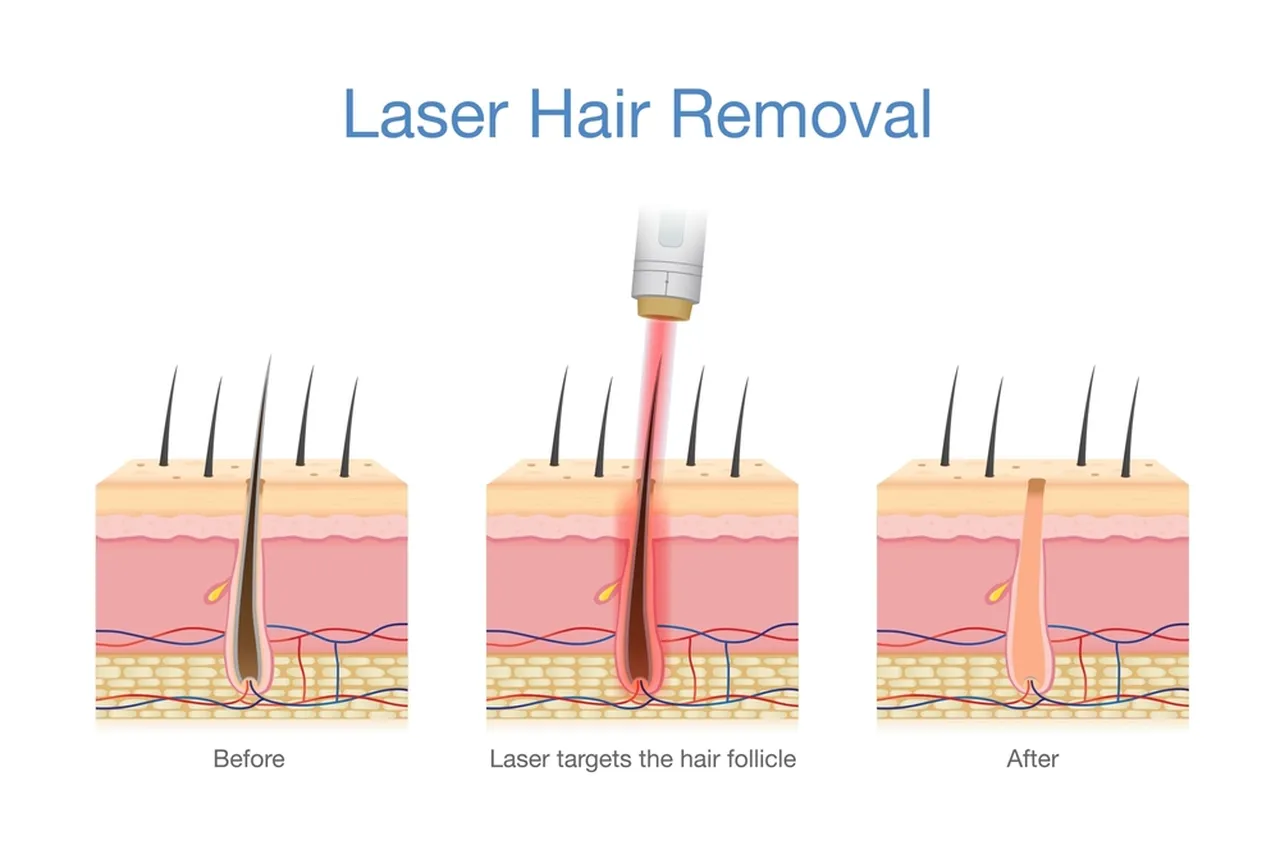
Are you tired of constantly shaving or waxing unwanted hair? Do you want a more permanent solution to hair removal? Laser hair removal might be just what you need. In this ultimate guide, we will explain how laser hair removal works, the types of lasers used, and the pros and cons of this method. We will also provide tips on preparing for the treatment, what to expect during and after the procedure, and how to maintain your results. Let’s dive in!
Table of Contents
- Introduction
- How Laser Hair Removal Works
- Overview of the Process
- Explanation of the Science Behind It
- Types of Lasers Used in Hair Removal
- Factors That Affect the Effectiveness of Laser Hair Removal
- Preparation for Laser Hair Removal
- Pre-Treatment Instructions
- What to Expect During the Treatment
- Aftercare for Laser Hair Removal
- Post-Treatment Instructions
- Common Side Effects and How to Manage Them
- Tips for Maintaining Results
- Pros and Cons of Laser Hair Removal
- Pros
- Cons
- Conclusion
- FAQs
- How many sessions are required for laser hair removal?
- Is laser hair removal safe?
- Does laser hair removal hurt?
- Can I shave between laser hair removal sessions?
- Can laser hair removal be done on any part of the body?
- References
Introduction
Laser hairfollicles
- Related Articles: Laser Hair Removal: A Comprehensive Guide
How Laser Hair Removal Works

Overview of the Process
During the treatment, a laser emits a beam of light that passes through the skin and targets the hair follicles. The laser is attracted to the pigment (melanin) in the hair, which absorbs the light and converts it into heat. This heat damages the hair follicle and inhibits future hair growth.
Explanation of the Science Behind It
Laser hairhair growth
During the procedure, the laser technician will use a handheld device that emits a laser beam directed at the hair follicles. The pigment in the hair absorbs the laser light, which causes the follicle to become damaged. This damage inhibits future hair growth by damaging the stem cells responsible for hair growth.
The success of laser hair removal depends on several factors, such as the patient’s hair color and skin type. The laser targets the melanin in the hair follicles, so the procedure works best on dark and light skin patients. However, advancements in laser technology have made it possible to treat patients with darker skin tones.
Several types of lasers are used for hair removal, including Alexandrite, Diode, and Nd:YAG. Each type of laser has its specific wavelength and pulse duration, which determines its effectiveness on different skin and hair types.
It’s important to note that laser hair removal doesn’t provide immediate results. The hair follicles need to be in the anagen (active growth) phase to be affected by the laser. Since not all hair follicles are in this phase simultaneously, multiple treatments are necessary to target all hair follicles effectively.
In summary, laser hair removal uses a concentrated beam of light to target the pigment in the hair follicles, damaging the follicles and inhibiting future hair growth. The procedure is safe and effective when performed by a licensed practitioner and requires multiple sessions to achieve optimal results.
Types of Lasers Used in Hair Removal
Several types of lasers are used in hair removal, including Alexandrite, Diode, Nd:YAG, and IPL (Intense Pulsed Light). Each laser has unique features and is suited for different skin types and hair colors.
Factors That Affect the Effectiveness of Laser Hair Removal
The effectiveness of laser hair removal depends on several factors, such as skin type, hair color, hair thickness, and the area being treated. Darker hair and lighter skin types typically respond best to laser hair removal, as the laser can easily target the hair follicle.
Preparation for Laser Hair Removal

Before getting laser hair removal, it’s essential to consult with a licensed practitioner to determine if you are a good candidate for the treatment. They will also provide pre-treatment instructions and answer any questions you may have.
Pre-Treatment Instructions
Before the treatment, you must avoid certain activities such as tanning, waxing, and plucking. You should also shave the treated area a day or two before the procedure to allow the laser to penetrate the hair follicles better.
What to Expect During the Treatment
During the procedure, you will wear protective eyewear, and the practitioner will apply a cooling gel to the treated area. They will then use a handheld laser device to target the hair follicles. You may feel some discomfort, such as a warm or prickling sensation, but it should be tolerable.
Aftercare for Laser Hair Removal
Post-Treatment Instructions
After the treatment, you may experience some redness, swelling, or discomfort in the treated area. Your practitioner will provide post-treatment instructions, such as avoiding sun exposure and wearing loose clothing.
Common Side Effects and How to Manage Them
Common side effects of laser hair removal include redness, swelling, and mild discomfort. These symptoms usually subside within a few hours to a few days. To manage them, you can apply ice packs or over-the-counter pain relievers, such as ibuprofen.
Tips for Maintaining Results
To maintain the results of laser hair removal, following a proper skincare routine and avoiding activities that can stimulate hair growth, such as waxing and plucking, is essential. You should also avoid sun exposure and use sunscreen regularly.
Pros and Cons of Laser Hair Removal

Pros
Laser hair removalseveral advantages
- Long-lasting results: Unlike traditional hair removal methods, such as shaving and waxing, laser hair removal can provide long-lasting results, with some patients experiencing permanent hair reduction.
- Precision: Laser hair removal can target hair follicles without damaging the surrounding skin, making it a precise and safe method.
- Time-saving: Laser hair removal can save time and effort in the long run, as you won’t have to shave or wax as frequently.
Cons
Some of the drawbacks of laser hair removal include:
- Cost: Laser hair removal can be expensive, especially if you require multiple treatments.
- Pain: Although the discomfort is tolerable, laser hair removal can be painful for some patients, particularly in sensitive areas.
- Not Suitable for All Skin Types: Laser hair removal may not be suitable for patients with certain skin conditions or those with dark skin tones.
Conclusion
Laser hairhair growth
FAQs
How many sessions are required for laser hair removal?
The number of sessions required for laser hair removal depends on several factors, such as the area being treated, hair color, and skin type. On average, patients require 6-8 sessions to achieve optimal results.
Is laser hair removal safe?
Laser hair removalside effects
Does laser hair removal hurt?
Laser hair removaldiscomfort
Can I shave between laser hair removal sessions?
Yes, you can shave between laser hair removal sessions. However, you should avoid other hair removal methods, such as waxing and plucking.
Can laser hair removal be done on any part of the body?
Laser hairbody parts
References
- National Center for Biotechnology Information – https://www.ncbi.nlm.nih.gov/pmc/articles/PMC3944668/
- ScienceDirect – https://www.sciencedirect.com/science/article/abs/pii/S0889854510000914
- Mayo Clinic – https://www.mayoclinic.org/tests-procedures/laser-hair-removal/about/pac-20394555
- WebMD – https://www.webmd.com/beauty/laser-hair-removal#1
- Healthline – https://www.healthline.com/health/laser-hair-removal






































